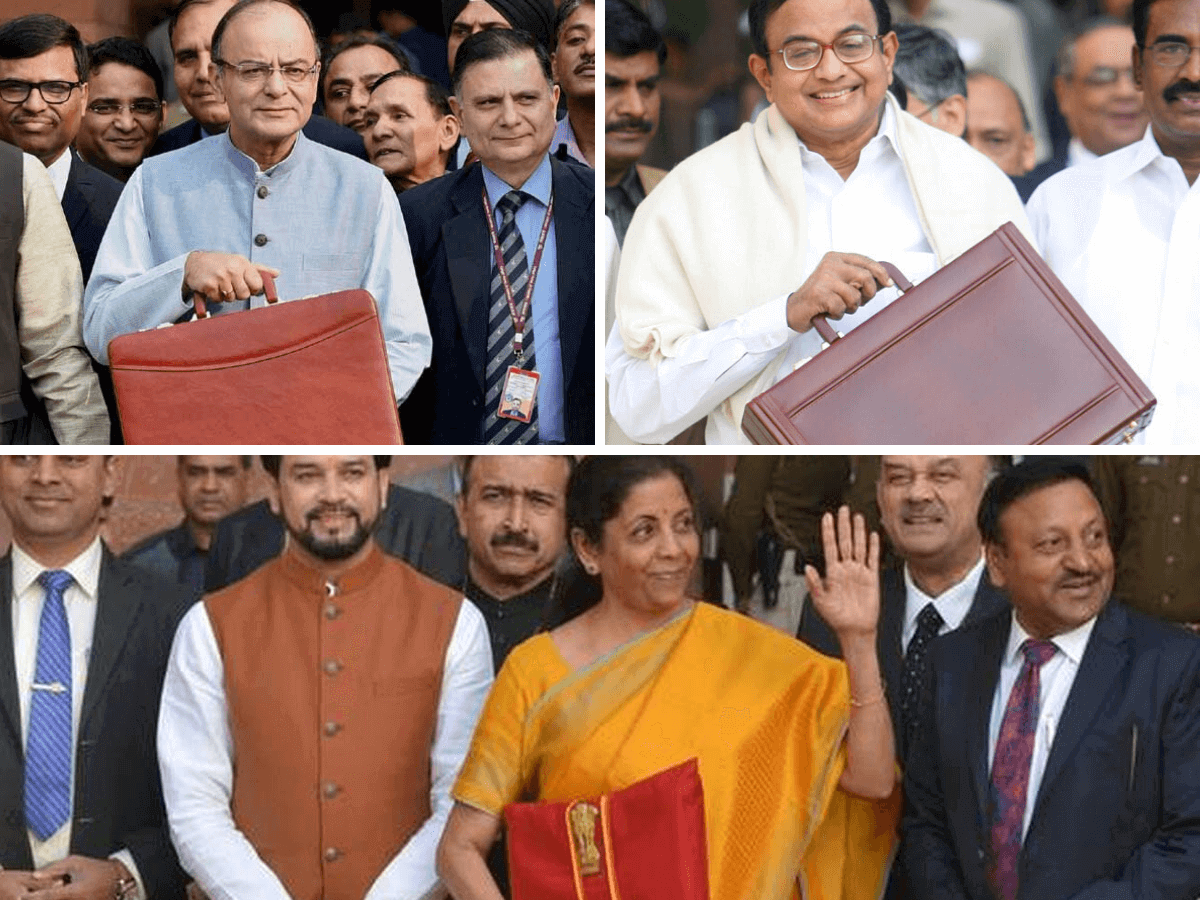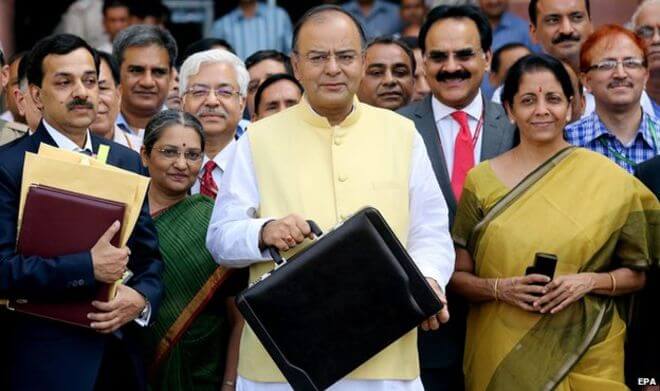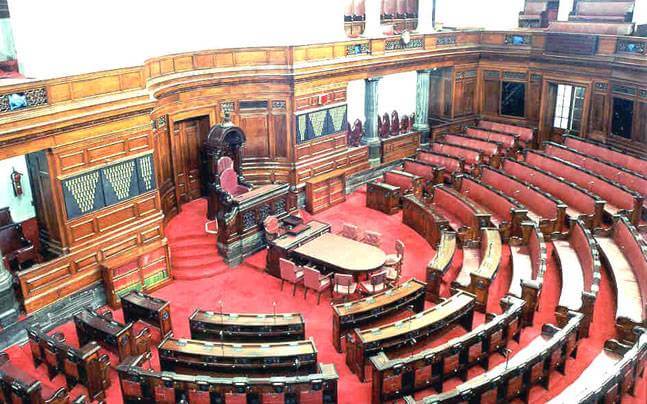Annual Financial Statement

Annual Financial Statement (AFS), the document as provided under Article 112, shows estimated
receipts and expenditure of the Government of India for next financial year (say, 2017-18) in relation to estimates for the previous financial year (ie 2016-17) as also expenditure for the year before last financial year (ie. 2015-16). The receipts and disbursements are shown under the three parts, in which Government Accounts are kept viz.,(i) Consolidated Fund, (ii) Contingency Fund and (iii) Public Account. The estimates of receipts and expenditure included in the Annual Financial Statement are for the expenditure net of refunds and recoveries, as will be reflected in the accounts.
Annual Financial Statement has the following heads.
- Statement I – Consolidated Fund of India [Receipts and Expenditure: Revenue Account; Receipts and Expenditure: Capital Account]
- Statement IA – Expenditure charged on the Consolidated Fund of India
- Statement 2 – Contingency Fund of India
- Statement 3 – Public Accounts of India [Receipts and Expenditure]
- Receipts & Expenditure of Union Territories without Legislature.
Demand For Grants

Article 113 of the Constitution mandates that the estimates of expenditure from the Consolidated
Fund of India included in the Annual Financial Statement and required to be voted by the Lok Sabha are submitted in the form of Demands for Grants. The Demands for Grants are presented to the Lok Sabha along with the Annual Financial Statement. Generally, one Demand for Grant is presented in
respect of each Ministry or Department. However, more than one Demand may be presented for a
Ministry or Department depending on the nature of expenditure. In regard to Union Territories without Legislature, a separate Demand is presented for each of the Union Territories. In budget 2014-15 there were 106 Demands for Grants.
Each Demand first gives the totals of ‘voted’ and ‘charged’ expenditure as also the ‘revenue’ and ‘capital’ expenditure included in the Demand separately, and also the grand total of the amount of expenditure for which the Demand is presented. This is followed by the estimates of expenditure under different major heads of account. The breakup of the expenditure under each major head between ‘Plan’ and ‘Non-Plan’ is also given. The amounts of recoveries taken in reduction of expenditure in the accounts are also shown. A summary of Demands for Grants is given at the beginning of this document, while details of ‘New Service’ or ‘New Instrument of Service’ such as formation of a new company, undertaking or a new scheme, etc., if any, are indicated at the end of the document.
PS: For more reference on any of these budget documents refer: Key to Budget Documents by Ministry of Finance as given in indiabudget.nic.in.
Appropriation Bill
Under Article 114(3) of the Constitution, no amount can be withdrawn from the Consolidated Fund without the enactment of such a law by Parliament. After the Demands for Grants are voted by the Lok Sabha, Parliament’s approval to the withdrawal from the Consolidated Fund of the amounts so voted and of the amount required to meet the expenditure charged on the Consolidated Fund is sought through the Appropriation Bill.
The whole process beginning with the presentation of the Budget and ending with discussions and voting on the Demands for Grants requires sufficiently long time. The Lok Sabha is, therefore, empowered by the Constitution to make any grant in advance in respect of the estimated expenditure for a part of the financial year pending completion of procedure for the voting of the Demands. The purpose of the ‘Vote on Account’ is to keep Government functioning, pending voting of ‘final supply’. The Vote on Account is obtained from Parliament through an Appropriation (Vote on Account) Bill.
Finance Bill
At the time of presentation of the Annual Financial Statement before Parliament, a Finance Bill is also
presented in fulfillment of the requirement of Article 110 (1)(a) of the Constitution, detailing the imposition, abolition, remission, alteration or regulation of taxes proposed in the Budget. A Finance Bill is a Money Bill as defined in Article 110 of the Constitution. It is accompanied by a Memorandum explaining the provisions included in it.
Memorandum Explaining the Provisions in the Finance Bill
To facilitate understanding of the taxation proposals contained in the Finance Bill, the provisions and their implications are explained in the document titled Memorandum Explaining the Provisions of the Finance Bill.
Documents as per the requirements of FRBM act:
Macroeconomic Framework Statement
The Macroeconomic Framework Statement presented to Parliament under Section 3(5) of the Fiscal
Responsibility and Budget Management Act, 2003 and the rules made thereunder contains an assessment of the growth prospects of the economy with specific underlying assumptions. It contains assessment regarding the GDP growth rate, fiscal balance of the Central Government and the external sector balance of the economy.
Fiscal Policy Strategy Statement
The Fiscal Policy Strategy Statement, presented to Parliament under Section 3(4) of the Fiscal Responsibility and Budget Management Act, 2003, outlines the strategic priorities of Government in the fiscal area for the ensuing financial year relating to taxation, expenditure, lending, and investments, administered pricing, borrowings and guarantees. The Statement explains how the current policies are in conformity with sound fiscal management principles and give the rationale for any major deviation in key fiscal measures.
Medium-term Fiscal Policy Statement
The Medium-term Fiscal Policy Statement presented to Parliament under Section 3(2) of the Fiscal
Responsibility and Budget Management Act, 2003, sets out three-year rolling targets for four specific fiscal indicators in relation to GDP at market prices namely (i) Revenue Deficit, (ii) Fiscal Deficit, (iii) Tax to GDP ratio and (iv) Total outstanding Debt at the end of the year. The Statement includes the underlying assumptions, an assessment of sustainability relating to balance between revenue receipts and revenue expenditure and the use of capital receipts including market borrowings for generation of productive assets.
Medium-term Expenditure Framework Statement
The Medium-term Expenditure Framework Statement presented to Parliament under Section 3 of the
Fiscal Responsibility and Budget Management Act, 2003 sets forth a three-year rolling target for the expenditure indicators with a specification of underlying assumptions and risks involved. The objective of the MTEF is to provide a closer integration between budget and the FRBM Statements.
PS: This Statement is presented separately in the session next to the session in which Budget is presented, i.e. normally in the Monsoon Session.
Explanatory Documents
Expenditure Budget Volume-1
This document deals with revenue and capital disbursements of various Ministries/Departments and
gives the estimates in respect of each under ‘Plan’ and ‘Non-Plan’. It also gives analysis of various
types of expenditure and broad reasons for the variations in estimates.
Expenditure Budget Volume-2
The provisions made for a scheme or a programme may spread over a number of Major Heads in the
Revenue and Capital sections in a Demand for Grants. In the Expenditure Budget Vol. 2, the estimates made for a scheme/programme are brought together and shown on a net basis at one place, by Major Heads. To understand the objectives underlying the expenditure proposed for various schemes and programmes in the Demands for Grants, suitable explanatory notes are included in this volume in which, wherever necessary, brief reasons for variations between the Budget estimates and Revised estimates for the current year and requirements for the ensuing Budget year are also given.
Receipts Budget
Estimates of receipts included in the Annual Financial Statement are further analysed in the document
“Receipts Budget”. The document provides details of tax and non-tax revenue receipts and capital receipts and explains the estimates. The document also provides the arrears of tax revenues and non-tax revenues, as mandated under the Fiscal Responsibility and Budget Management Rules, 2004. The trend of receipts and expenditure along with deficit indicators, statement pertaining to National Small Savings Fund (NSSF), statement of revenues foregone, statement of liabilities, statement of guarantees given by the government, statements of assets and details of external assistance are also included in Receipts Budget.
Budget at a Glance
This document shows in brief, receipts, and disbursements along with broad details of tax revenues and other receipts. This document also exhibits broad break-up of expenditure – Plan and Non-Plan, allocation of Plan outlays by sectors as well as by Ministries/Departments and details of resources transferred by the Central Government to State and Union Territory Governments. This document also shows the revenue deficit, the gross primary deficit and the gross fiscal deficit of the Central Government. The excess of Government’s revenue expenditure over revenue receipts constitutes revenue deficit of Government. The difference between the total expenditure of Government by way of revenue, capital and loans net of repayments on the one hand and revenue receipts of Government and capital receipts which are not in the nature of borrowing but which finally accrue to Government
on the other, constitutes gross fiscal deficit. Gross primary deficit is measured by gross fiscal deficit reduced by gross interest payments. In the Budget documents ‘gross fiscal deficit’ and ‘gross primary
deficit’ have been referred to in abbreviated form ‘fiscal deficit’ and ‘primary deficit’, respectively. This document also shows liabilities of the Government on account of securities (bonds) issued in lieu of
oil and fertilizer subsidies.
Highlights of Budget
This document explains the key features of the Budget, inter alia, indicating the prominent
achievements in various sectors of the economy. It also explains, in brief, the budget proposals for allocation of funds to be made in important areas. The summary of tax proposals is also reflected in the document.
Other Documents Along with Budget Statements
Detailed Demands for Grants
The Detailed Demands for Grants are laid on the table of the Lok Sabha sometime after the presentation of the Budget, but before the discussion on Demands for Grants commences. Detailed Demands for Grants further elaborate the provisions included in the Demands for Grants as also actual expenditure during the previous year. A break-up of the estimates relating to each programme/organisation, wherever the amount involved is not less than 10 lakhs, is given under a number of object heads which indicate the categories and nature of expenditure incurred on that programme, like salaries, wages, travel expenses, machinery and equipment, grants-in-aid, etc. At the end of these Detailed Demands are shown the details of recoveries taken in reduction of expenditure in the accounts.
Outcome Budget
With effect from Financial Year 2007-08, the Performance Budget and the Outcome Budget hitherto presented to Parliament separately by Ministries/Departments, are merged and presented as a single document titled “Outcome Budget” by each Ministry/Department in respect of all Demands/ Appropriations controlled by them, except those exempted from this requirement. Outcome Budget broadly indicates physical dimensions of the financial budget of a Ministry/Department, indicating actual physical performance in the preceding year (2015-2016), performance in the first nine months (up to December) of the current year (2016-2017) and the targeted performance during the ensuing year (2014-2015).
Annual Reports
A descriptive account of the activities of each Ministry/Department during the year 2016-2017 is given in the document Annual Report which is brought out separately by each Ministry/Department and circulated to Members of Parliament at the time of discussion on the Demands for Grants.
Economic Survey
The Economic Survey brings out the economic trends in the country which facilitates a better appreciation of the mobilisation of resources and their allocation in the Budget. The Survey analyses the trends in agricultural and industrial production, infrastructure, employment, money supply, prices, imports, exports, foreign exchange reserves and other relevant economic factors which have a bearing on the Budget, and is presented to the Parliament ahead of the Budget for the ensuing year.
Conclusion:
The Budget of the Central Government is not merely a statement of receipts and expenditure. Since
Independence, with the launching of Five Year Plans, it has also become a significant statement of government policy. The Budget reflects and shapes, and is, in turn, shaped by the country’s economy. For a better appreciation of the impact of government receipts and expenditure on the other sectors of the economy, it is necessary to group them in terms of economic magnitudes, for example, how much is set aside for capital formation, how much is spent directly by the Government and how much is transferred by Government to other sectors of the economy by way of grants, loans, etc. This analysis is contained in the Economic and Functional Classification of the Central Government Budget which is brought out by the Ministry of Finance separately.
 While studying Budget related topics, many are confused about the differences between full budget, interim budget, and vote on account. Don’t worry! We hope this post will clear all your queries!
While studying Budget related topics, many are confused about the differences between full budget, interim budget, and vote on account. Don’t worry! We hope this post will clear all your queries!



.jpeg)


.jpeg)